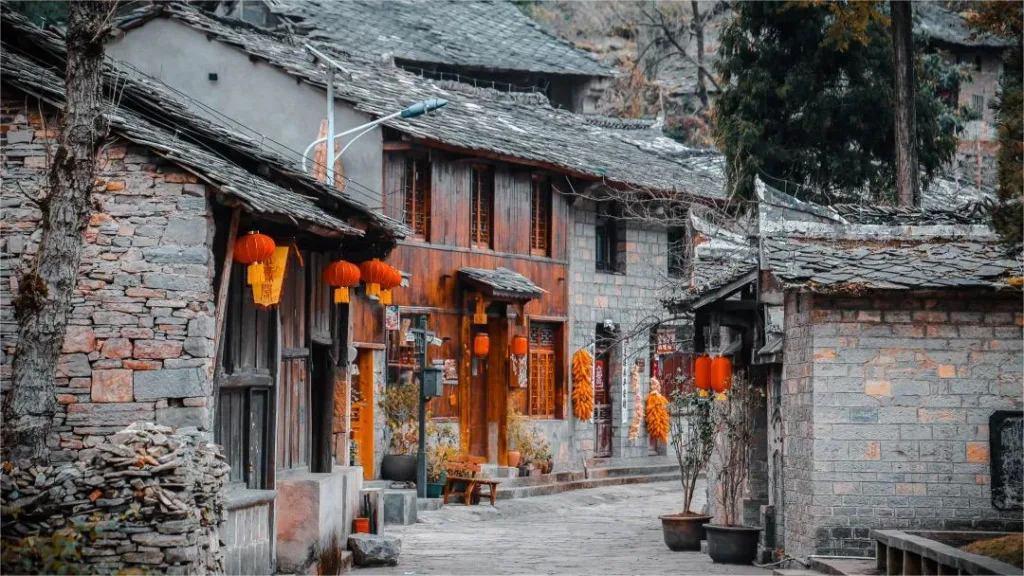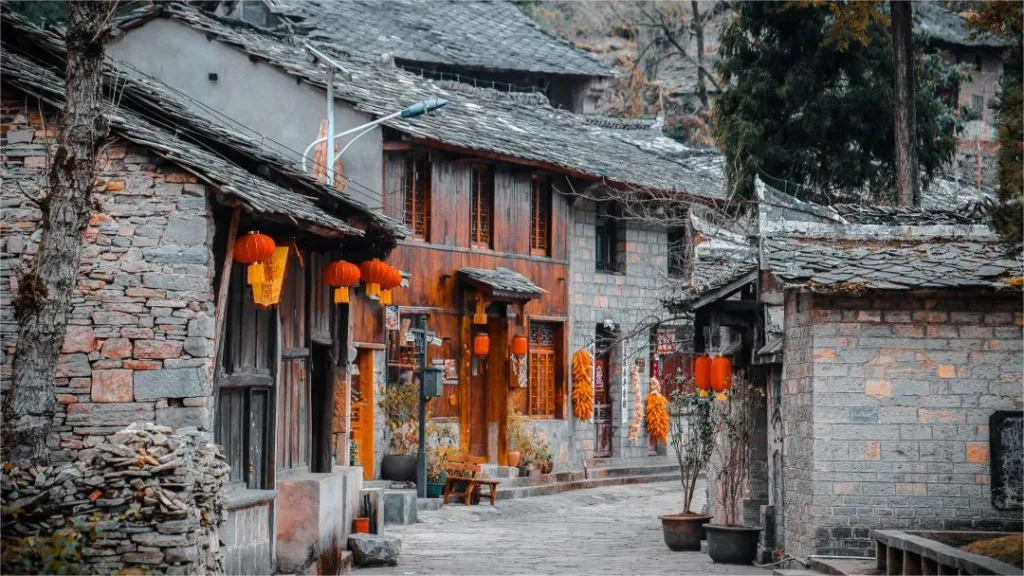Yunfeng Tunpu (Castelo Antigo) - Bilhete, horário de funcionamento, localização e destaques


Yunfeng Tunpu (云峰屯堡), also known as Yunfeng Ancient Castle, is located in Anshun City, Guizhou Province, China. Comprising eight fortified villages including Yunshan Tun, Benzhai, Leitun, and Xiaoshanzhai, it served as the core area for the Ming Dynasty’s southern expedition forces. Nestled amidst lush greenery and rolling hills covering an area of 11 square kilometers, each village is fortified with walls and watchtowers, featuring stone exteriors reminiscent of Jiangnan-style courtyard homes. This layout, characterized by interconnected alleys and closely knit households, not only provided comfortable living spaces but also offered strategic advantages for defense, earning praise from scholars as the “last bastion of the Cold Weapon Era.”
The residents of Yunfeng Tunpu are descendants of Han Chinese soldiers and civilians who were relocated to Anshun during the Ming Dynasty’s military campaigns. Over six centuries, they have preserved and evolved Ming-era customs, reflected in their architecture, attire, cuisine, customs, and entertainment. Stepping into Yunfeng Tunpu feels like stepping back in time, offering visitors a captivating glimpse into a bygone era, where the charm of Ming Dynasty culture remains vividly alive, making it a place of enduring allure.
Índice
- Informações básicas
- Localização e transporte
- Highlights of Yunfeng Tunpu
- Vlog about Yunfeng Ancient Castle
Informações básicas
| Duração estimada da excursão | Um dia |
| Preço do bilhete | 60 RMB |
| Horário de funcionamento | 8.00 – 18.00 (1st June – 31st August) 8.30 – 17.30 (1st September – 31st May) |
| Número de telefone | 0086-0851-33853916 |
Localização e transporte
Yunfeng Tunpu is located in Qiyangqiao Town, Xixiu District, approximately 15 kilometers east of Anshun City in Guizhou Province, near Tianlong Ancient Castle. To reach Yunfeng Tunpu, visitors can take a special tourist bus labeled “Anshun to Jiuzhou (安顺至旧州)” from the Anshun City Bus Transfer Center. Upon boarding, inform the ticket seller that you wish to alight at “Niutiguan (牛蹄关).” The bus will drop you off at the intersection of the parking lot near the scenic area, where you’ll find the ticket office easily visible.
Highlights of Yunfeng Tunpu
Yunfeng Tunpu Cultural Museum

Spanning over ten acres, the Yunfeng Tunpu Cultural Museum is divided into outdoor and indoor exhibition areas, featuring the Earth Opera Stone Carving Art Wall and the Tunpu Culture Wall. The indoor exhibition area comprises four sections: “Moving North to Conquer the South,” “Settling in Guizhou,” “Echoes of the Jianghuai Region,” and “Legacy of the Ming Dynasty.” Through artifacts, oil paintings, sculptures, photographs, sand tables, and reconstructed scenes, the museum vividly portrays over 600 years of Tunpu history, serving as a comprehensive guide to exploring the Yunfeng area.
Yunshan Tun Village

Yunshan Tun Village encapsulates 600 years of tumultuous history in Guizhou. Nestled amidst mountains and surrounded by walls, Yunshan Tun was strategically positioned for defense. In its prime, it was home to over a thousand residents. The remnants of ancient dwellings, streets, temples, and theaters within the Tun bear witness to its past glory. From a military outpost to a bustling commercial hub, Yunshan Tun has witnessed the socio-political transformations of three dynasties: the Ming, Qing, and Republican eras. Key attractions include the Datun Gate, the Ming-Qing Street, the ancient theater, the Temple of Wealth, the Flower Tower, Western-style houses, the Deshengchang Pharmacy, and the Yunshan Temple.
Festivais locais

Earth Opera Performances: Held annually in the first and seventh lunar months, with daily performances at the museum.
River Lantern Release: Celebrated on the 14th day of the seventh lunar month.
Processions for Wang Gong and the City God: Observed on the 18th day of the first lunar month.
Temple Fairs: Celebrated during the Lantern Festival in the first lunar month, the Ghost Festival in the seventh lunar month, and the Winter Solstice in the tenth lunar month, along with the White Dragon Festival on the third day of the second lunar month, the Thunder God Festival on the twenty-fourth day of the sixth lunar month, and the Sun Festival on the nineteenth day of the twelfth lunar month.
River Crossing Ceremony: A mysterious ritual observed once every twelve years during the Dragon Year, where every woman in the village must cross the river at least once in her lifetime, symbolizing a rite of passage and connection to ancestral traditions.
Vlog about Yunfeng Ancient Castle
Atracções de Anshun, Sítios históricos de Guizhou